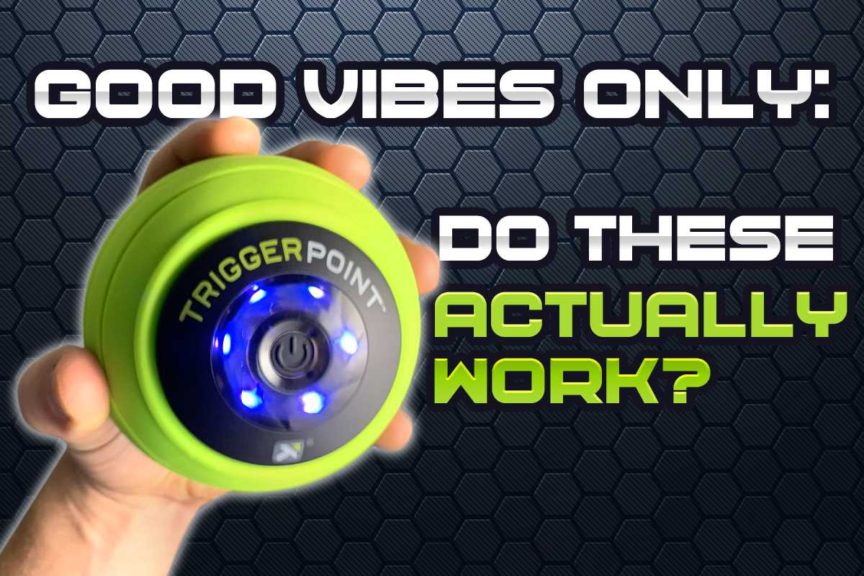As a physical therapist who is also a strength & conditioning specialist, I am always proud to say that I am stupidly passionate about helping others feel as physically well as possible. And I must admit that I tend to have a serious case of gear acquisition syndrome, in which I’m always playing around with therapeutic devices to see which ones can potentially best help the patients whom I work with. Lately, I’ve been playing around with a vibration ball, and man this thing is fun – and surprisingly effective.
Vibration therapy balls can be quite effective with reducing muscle tension and pain while improving range of motion. They can also speed recovery from injury. Their unique shape provides additional benefits over other similar therapeutic devices, thus making them very effective for treatment.
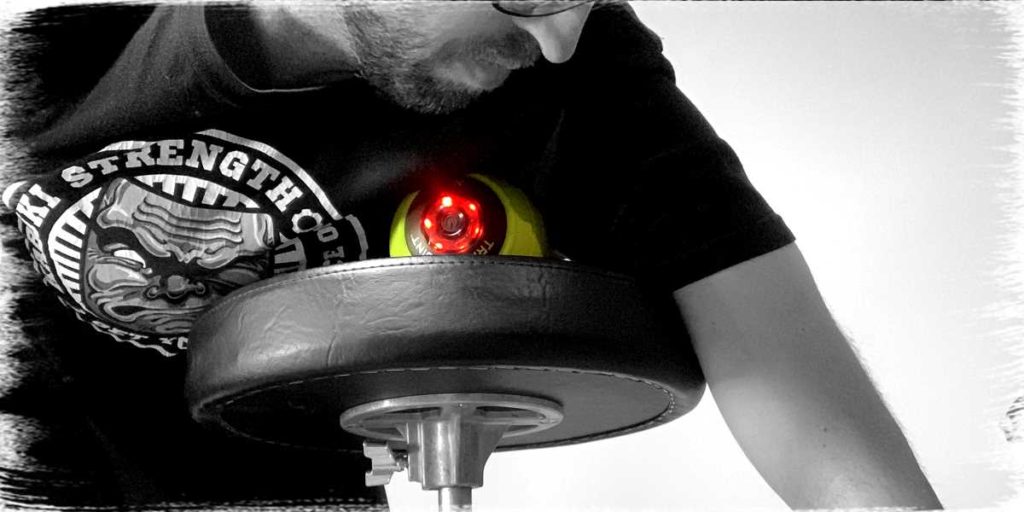
Having been playing around with lots of vibration therapy tools and protocols over the last while, I’ve been seriously surprised by the versatility and practicality of using a vibrating therapy ball.
If you want all the details as to what science is finding with vibration therapy and why a vibrating ball could be worthy of consideration for adding to your arsenal of pain relieving, movement enhancing tools, then keep on reading!
To help you save time, you can use the article headlines below to instantly navigate to that section of the article. These are quick links, so simply click (or tap) on the following article headlines to jump to that particular section.
ARTICLE OVERVIEW:
- How vibration therapy can help you feel and move better
- Is one type of vibrating ball better than another?
- Different power settings can increase effectiveness
- They are more versatile than a vibrating roller
- They double as a regular massage therapy ball
- Bonus: vibrating therapy balls are incredibly portable
- Final thoughts
So, why vibration therapy? In terms of improving musculoskeletal health and reducing pain, vibration therapy is making some pretty neat headway in the scientific literature these days (which I’ll be discussing below). So much headway in fact that there have been a lot of health and wellness companies trying to release various products containing this technology in order to capitalize on it’s therapeutic benefits.
Related Article: Massage Gun vs. Vibrating Roller – Is One Better Than The Other?
So, before we get into why it might be a good idea to use one of these little buzzy balls, it will be helpful to take a rather quick look at what science has found with vibration therapy.
How vibration therapy can help you feel and move better
No one wants to waste their hard-earned money on products that are a sham, that have bogus claims or that fall short when it comes to delivering the effects as promised. Thankfully, the science is becoming rather clear that vibrational therapy can produce some rather effective and therapeutic benefits for various aspects of musculoskeletal health and wellness when used appropriately.
Related Article: IASTM: Here’s How it Works to Decrease Pain and Improve Mobility
Here’s a very quick rundown as to some of the main benefits that have been found:
Pain reduction

Being in pain sucks. Getting out of pain is awesome. And when it comes to musculoskeletal pain and vibration therapy, don’t underestimate the power of some good vibrations.
Pain coming from muscles and tendons can be quite common and can occur for various reasons. Any time a muscle is overworked, it can become stiff and sore. One of the more common causes of this pain and stiffness comes from the muscle discomfort we can experience after physical activity – that feeling of having given your now tight and stiff muscles a good workout the day before.
And when looking at how vibration therapy can help reduce this discomfort, research has shown that localized vibration therapy has been effective in preventing the occurrence of delayed onset muscle soreness (DOMS) following workouts and other musculoskeletal conditions that can cause pain and discomfort.1,2 Not only does it feel better to not experience this delayed soreness, but it also equates to is less time needed for physical recovery before the next activity session can begin.3
Localized vibrational therapy has also been shown to decrease muscle soreness in individuals’ calves after downhill running, decreasing the perception of muscle fatigue and improving blood flow and warmth to the targeted muscles.4,5
So whether your muscle soreness is from lifting weights, running or performing other athletic activities, there’s a good chance that incorporating vibrational therapy (such as by using a therapy ball), will help ensure that you minimize pain and discomfort associated from these activities.
Movement restoration & increased strength
In addition to pain-relieving benefits, localized vibrational therapy has also been shown to increase ranges of motion for areas targeted specifically by these vibrations.5,6 Additionally, studies have shown that this improvement in available range of motion for the body is typically followed with increases in muscle strength around the area receiving the vibrational therapy.5
It makes sense that improving ranges of motion for targeted muscles can also result in improvements in muscle strength and overall performance, so it’s almost like a little bonus that by improving the movement ranges of muscles you’ll subsequently improve other parameters of the muscles’ functions as well.
Accelerating injury recovery
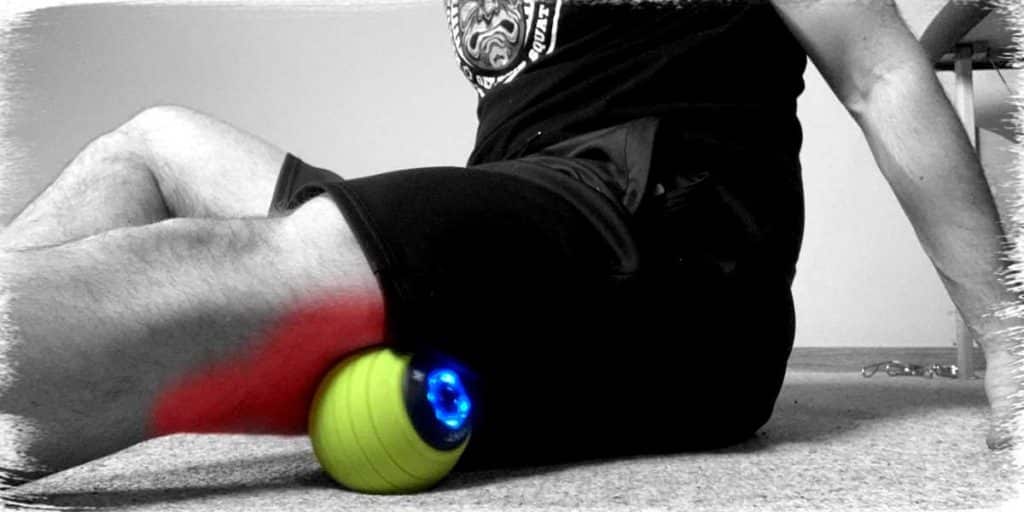
Being injured is brutal. And if you happen to be in this unfortunate circumstance, it may come as a bit of relief to know that localized vibrational therapy has been shown to speed up recovery parameters involved with ankle sprains and hamstring injuries.7 Stands to reason that if localized vibrational therapy can do this for injured ankle muscles and hamstrings, it can likely do it for other muscles within the body as well.
When it comes to using vibrational therapy as a rehabilitative device, literature supports its use (when appropriate) since it can complement other forms of rehabilitation while being easy to use, time efficient and not associated with any adverse effects in research or clinical practice.8
Related article: Blood Flow Restriction: Evidence and Uses for Injury Rehabilitation
What makes this so beneficial is that you don’t need to come into a clinic or have a specialized health care professional use vibrational therapy on you. Simply using a ball on your own can likely help with various aspects of your injury recovery if you’ve strained or injured a muscle.
Is one type of vibrating ball better than another?
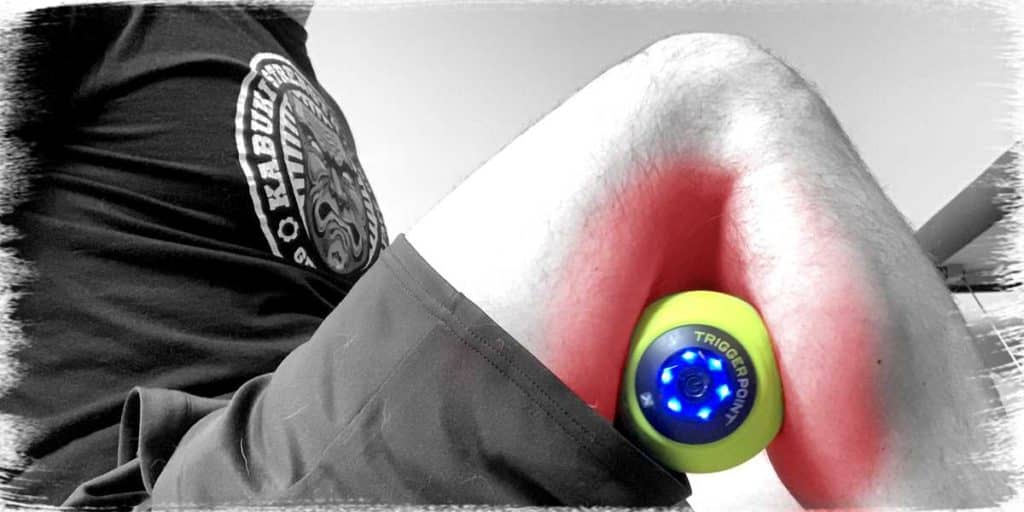
When it comes to the plethora of different vibration balls that are on the market, many people wonder if one type or brand is better than another; these balls can come in different sizes, have different textures and different power outputs, making for a confusing experience.
I personally don’t worry too much about the texture of the ball, as I’m more interested in its vibration abilities and overall build quality than texture; the ball’s texture won’t have nearly the amount of therapeutic impact as the vibrational output.
As for size, a medium size (about the size of a grapefruit) tends to offer the greatest treatment versatility, allowing me to target feet, calves, shoulders and most other body parts quite nicely. Tends to take up less space in the ol’ gym bag as well.
This is where I feel that the MB Vibe by TriggerPoint, (Link takes you to Amazon) has done a great job. The Vibe is a smaller, but deceptively powerful vibrating therapeutic ball that feels robust and solid whenever you pick it up and use it.
Please note: The Amazon links in this article are affiliate links – I use the very small commissions I receive to offset the cost of running and maintaining this website.
Of course, the MB Vibe isn’t the only decent vibrating sphere/ball out there as there are plenty of other worthy candidates. I just personally recommend it since I used and and know that it has solid quality and performance output at a very reasonable price.
But if you’re looking for something that costs even less, you could check out the Vulken Acusphere (Amazon Link), which will cost a few less dollars, however I can’t speak to the quality or it’s power output since I haven’t used it at this point in time.
Different power settings can increase effectiveness

The more treatment versatility a therapeutic device can offer, the more effective it tends to become. This is since the more options there are for ways in which to treat an issue, the greater one can fine-tune and optimize the treatment process. Every person’s needs and each respective body part being treated are unique, so having a device that can offer variations in some form of treatment application can really help optimize treatment effectiveness.
In the case of a vibrating therapy ball, the treatment variability is best seen in vibrational power output. Most vibrating therapy balls allow you to select different intensities or power output for vibrational force and it’s these variable intensities in vibration that can really make them more effective.
These different intensity levels to choose from are quite a nice feature since not all areas that one wishes to treat on themselves require the same intensity; sometimes it’s just nicer to experience a gentler form of vibration or an area of the body may be extra sore or sensitive, requiring less overall treatment intensity.
Fine tuning the power output is rather ideal; if the overall vibration power can’t go high enough for what the individual needs, it likely won’t reduce therapeutic benefits. Just the same, if the vibration force is too high, it may be too painful or uncomfortable to use, eliminating any chance for therapeutic benefit as well.
In my case, the biggest surprise that came to me when first playing around with the MB Vibe was how much vibratory power it has. Don’t let its size fool you – this thing packs a punch, and what’s even better is that it has three different levels of intensity to select from. I found this to be great since I need more force in some areas of my body while requiring less force in others (the same which can be said for my patients as well).
So, whatever type of ball that you decide to pick up, getting a ball that lets you select different power intensities is going to offer you a lot more treatment versatility, affording you a higher likelihood of achieving the therapeutic effectiveness that you’re after.
A vibrating ball can be more versatile than a vibrating roller
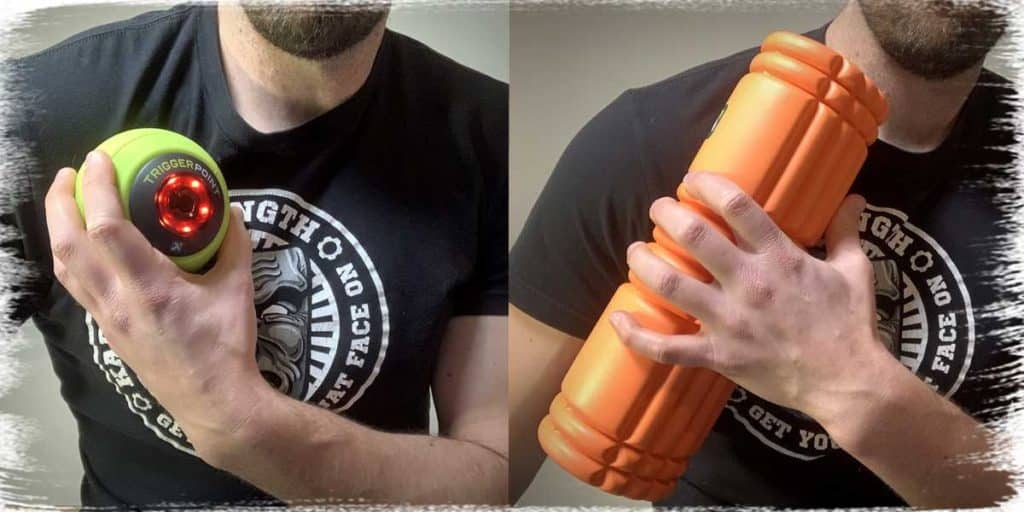
If there were only one type of therapeutic vibratory device that I could have, I’d likely pick a vibrating therapy ball. Now, don’t get me wrong, in the perfect world I’d have my own full-body vibration plate to go along with my vibrating roller and my ball. All of these forms of vibration therapy are great and quite therapeutic.
Related article: Foam Rolling Your Pecs: A Much More Practical & Effective Way
But for most people, money and versatility are the main driving forces behind which piece of equipment to start out with. And if this is the case for you, a vibrating ball is going likely to offer the most versatility for you (and will certainly cost the least) when compared to similar devices such as a vibrating foam roller.
Generally speaking, you can target all the same areas with the vibratory ball as you can with a vibrating roller. However, the Vibe (or any other ball) can even target and treat additional areas much more effectively than a roller, due to its spherical shape, which contours to certain areas of the body quite nicely. A great example of this is with treating the pectoral muscles: this is very straightforward to do with a ball, but the cylindrical shape of the roller is going to make this area quite tricky or impractical to treat.
They double as a regular massage therapy ball
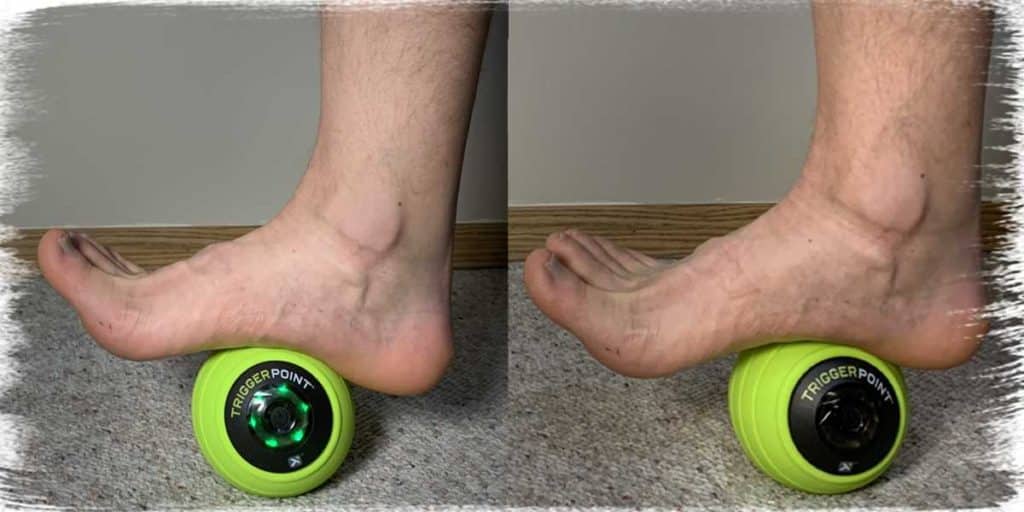
One added benefit of owning a vibrating ball, such as the Vibe is that it doubles as a standard massage therapy ball – meaning it doesn’t have to be vibrating in order to use it. There’s still plenty of therapy to be had when using a ball to treat the muscles sans vibration. Since a vibration ball can still be used as a regular ball, but a regular ball can’t magically become one that vibrates, it’s a nice little two-for-one in terms of having a device that doubles up in it’s abilities, further leading to increased effectiveness.
Bonus: vibrating therapy balls are incredibly portable
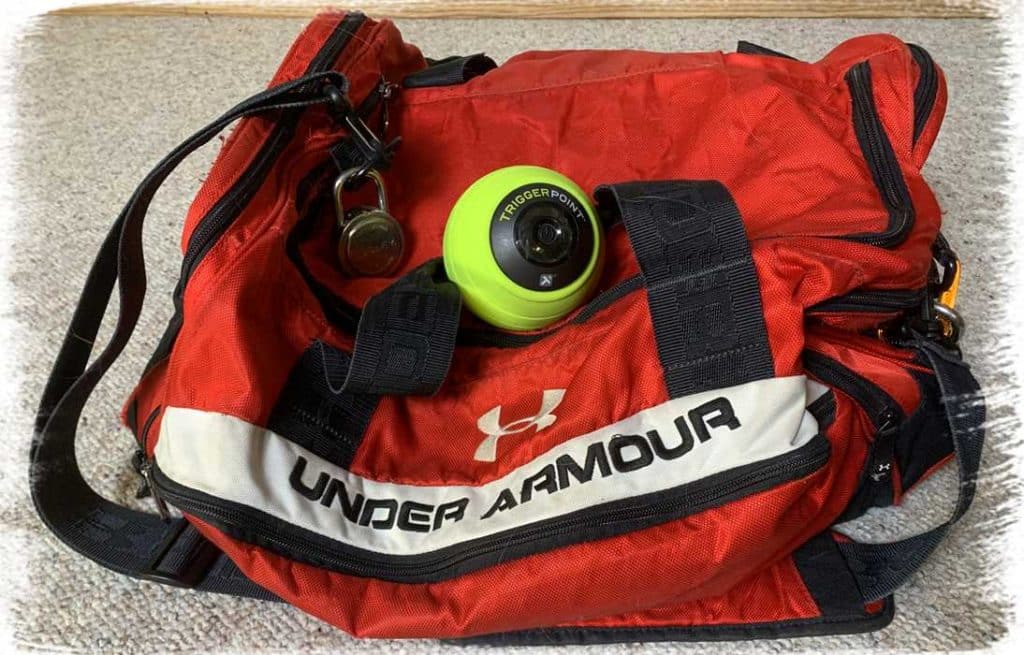
Portability of a vibrating therapy ball may or may not be an important factor to you, however it’s still worth quickly mentioning. If you plan on using such a device at home or without the need to take it to different locations, feel free to skip over this section.
If, however, you plan on hauling this little device around and using it in different locations, it’s going to be your best friend. Most people enjoy the ability to tuck away a therapeutic device into their gym bag and use it right after a workout. If that’s the case for you, this thing will work great as it will fit into a gym bag without taking up any sort of noticeable real estate. Even if your gym bag runs pretty full to begin with, you shouldn’t have any issues tucking something such as MB Vibe inside.
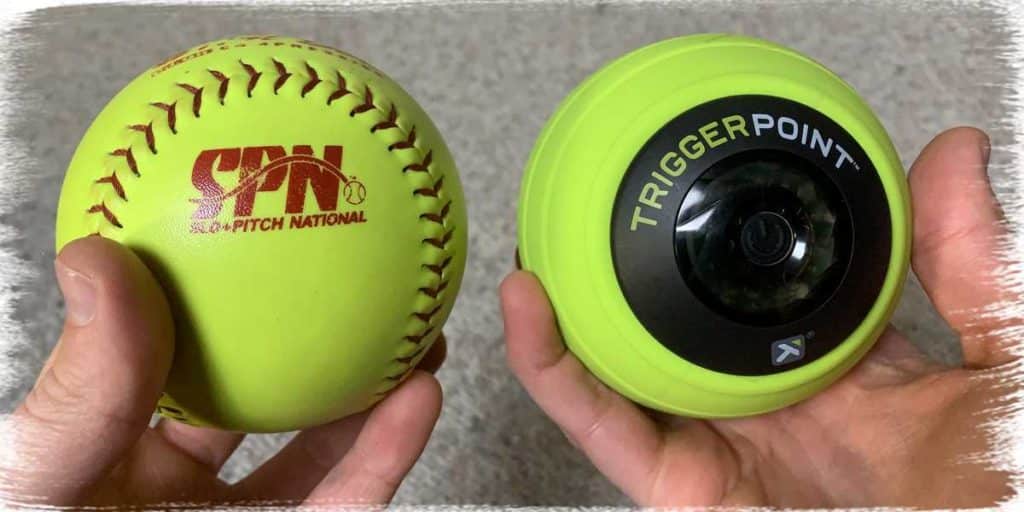
The added benefit of portability is that in the era of Covid-19, it’s nice to have your own equipment. While many public or private gyms and facilities have whole-body vibration plates, you may find added comfort in using your own vibration equipment rather than using one more public piece of equipment that various people have been sitting on or holding onto all day long.
So, being able to make your warm ups and/or cool downs more effective by quickly grabbing your vibration ball out of your gym bag and using it as desired is a nice added perk.
Final thoughts
When it comes to taking care of myself and my patients, adding a vibrating therapy ball has been a pleasant little surprise and subsequent addition to my ever-growing therapeutic arsenal. It’s kind of like a handy little sidekick that I find myself reaching for when I want to quickly target some soft tissues of mine while trying to maximize the specific therapeutic responses that it can offer.
Of course, there’s always going to be plenty of other tools and pieces of equipment that I reach for, but the vibrating ball just makes too much sense to not incorporate into my “tool box” of therapeutic devices – it costs very little, packs a great punch in vibration intensity, takes up no space at all and can be used on numerous parts of the body in a multitude of ways.
Every tool for myself or my patients has a time and a place. And when it comes to a vibrating therapy ball, I’m happy that I’ve added one to my arsenal.
References:

Hi! I’m Jim Wittstrom, PT, DPT, CSCS, Pn1.
I am a physical therapist who is passionate about all things pertaining to strength & conditioning, human movement, injury prevention and rehabilitation. I created StrengthResurgence.com in order to help others become stronger and healthier. I also love helping aspiring students and therapists fulfill their dreams of becoming successful in school and within their clinical PT practice. Thanks for checking out my site!

